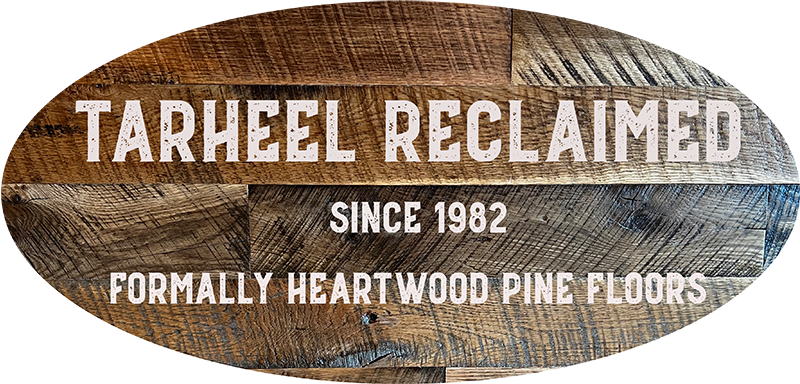Reclaimed wood floor finishes are essential processes designed to shield these unique floorings from environmental wear. Although much stronger and more durable than fresh wood, Without an appropriate finish, reclaimed wood can face issues like cracking, drying, swelling due to moisture, and overall deterioration. Beyond just protection, the right finish amplifies the natural, timeworn beauty of reclaimed wood. Whether you're dealing with century-old beams or newer reclaimed wood, a finish is integral. Expert craftsmen often stress its significance, with the finish often comprising a notable portion of the total cost of reclaimed wood flooring. In this guide, we'll navigate the myriad of finishes suitable for reclaimed wood floors, explore factors to consider when opting for a finish, and detail the processes involved, among other essential insights.
Penetrating Oil Finishes
Penetrating wood finishes are favored by many for the authentic, organic aesthetic they bestow upon reclaimed wood floors. Unlike surface finishes that rest atop the wood, these finishes delve deep, interacting with the wood's very grain. Their intrinsic quality ensures that the wood's original texture is showcased, often highlighted in richer tones. Typically, applying these finishes involves using a rag, which ensures an even distribution of the oil and enhances the depth of penetration. Not only do they provide a robust protective layer, but their ease of application also makes them a popular choice for many. In the following sections, we'll delve into the various types of penetrating oil products that can breathe new life into your reclaimed wood floors.
- Linseed Oil: Derived from flaxseed and is one of the most common natural oils used.
- Tung Oil: Extracted from the nut of the china wood tree.
- Danish Oil: A mixture of tung oil or polymerized linseed oil.
- Cedar Oil: also known as cedarwood oil, is an essential oil derived from various types of Cedar trees
Oil based finish immediately changes the color of the wood to a darker tone. Over time and with UV exposure the oil finish changes color to a yellowish amber tone.
These finishes provide a warm, rich, and natural look. While they are relatively easy to apply and repair, they might require frequent reapplications to maintain their look.
Water-Based Finishes
Available in both oil-based and water-based varieties, this finish provides a robust, enduring shield against moisture and chemicals. It preserves the wood's innate hue, accentuating its grain in greater detail. While offering a pristine finish that underscores wood's inherent charm, water-based finishes have the added advantages of faster drying times and a more subtle scent compared to oil-based alternatives.
Water-based finishes, known for their environmental friendliness, are a top choice due to their minimal odor, hassle-free cleanup, and rapid drying capabilities. They deliver a translucent finish that stands the test of time without yellowing, making them perfect for lighter-toned woods. Although they might not have the same durability as certain other finishes, their reduced VOC emission and clarity make them a preferred option for many indoor projects. However, one should be prepared for potential grain-raising that could necessitate intermediate sanding.
Polyurethane
Polyurethane, available in both water-based and oil-based variants, is renowned for its robustness against moisture, heat, and daily wear. This versatile finish ranges in sheen from understated satin to radiant gloss, enhancing wood's natural allure while providing formidable protection. As a preferred choice for many, polyurethane's resilience to external elements makes it an exemplary pick for flooring, furnishings, and cabinetry.
Wax
Wax finishes, with options like beeswax or carnauba, endow wood with a soft touch and a delicate sheen. Historically one of the earliest finishing methods, wax imparts a natural, low-luster look that exudes warmth. Although less resilient than other finishes, wax is relatively effortless to apply using a cloth. Its charm can be rejuvenated through occasional buffing. Ideal for items with minimal exposure to extensive wear, a wax finish often acts as a protective layer over other finishes.
Stain
Stains serve to color the wood, setting the stage before the actual finish is applied. While they don't function as finishes themselves, they deeply penetrate the wood, either accentuating or modifying its natural hue. Depending on the selected stain, one can either highlight the inherent wood grain or even mimic the look of a different wood type. It's crucial to remember that stains are preparatory; they require a subsequent protective finish to seal and safeguard the wood's enhanced beauty.
French Polish
French polish is less a material and more an art form. This age-old technique, primarily associated with fine furniture, employs shellac dissolved in alcohol. Applied in numerous thin coats using a rubbing pad, it yields a remarkably lustrous, mirror-like finish. Although the end result is a deep, rich sheen reminiscent of antique furniture, the process is labor-intensive. It's worth noting that while the visual appeal of a French polish is undeniable, it might not offer the durability of some contemporary finishes.
Epoxy
Epoxy finishes stand out for their exceptional durability and resistance, making them a favored choice for tabletops, bar tops, and other surfaces demanding a robust protective layer. This finish imparts a lustrous, clear coat that not only safeguards but also elevates the aesthetics of surfaces. What sets epoxy apart is its self-leveling nature and its ability to encapsulate objects, offering a mesmerizing glass-like finish. However, its application necessitates meticulous precision. From countertops and tables to floors, epoxy is the go-to for those seeking a glossy, water-resistant, and creative finishing touch.
Bleaching Oil
Bleaching oil, a distinctive choice for wood finishes, is specifically crafted to both enhance and protect exterior woods like cedar and redwood. By accelerating the wood's natural graying process, it imparts an aged, weathered appearance while simultaneously safeguarding against moisture and harmful UV rays. Frequently applied to outdoor structures such as decks and sidings, bleaching oil not only offers robust protection but also evolves the wood's hue into a unique silvery patina over time.


